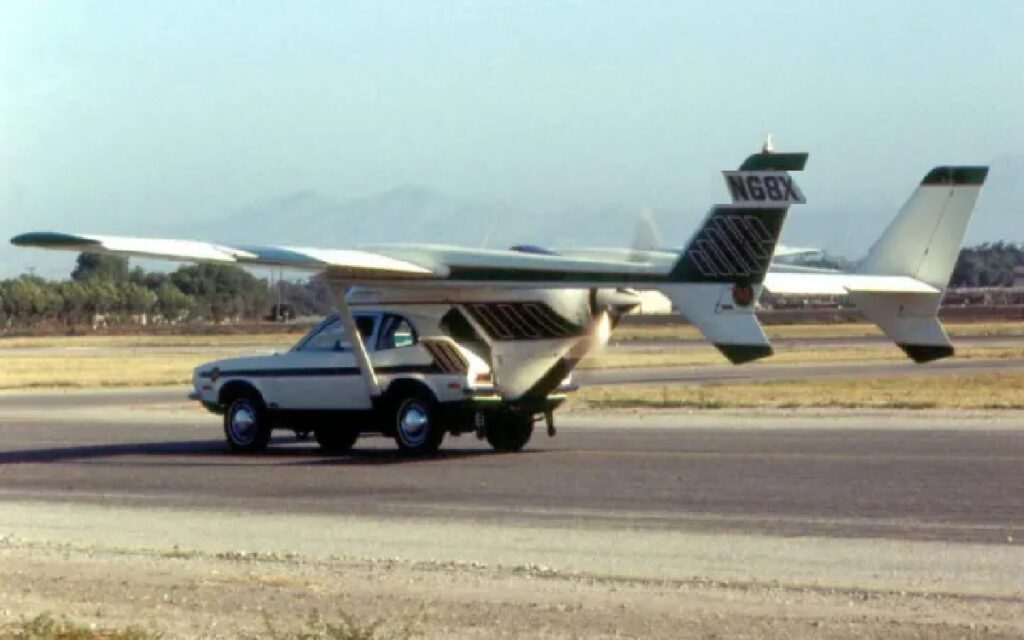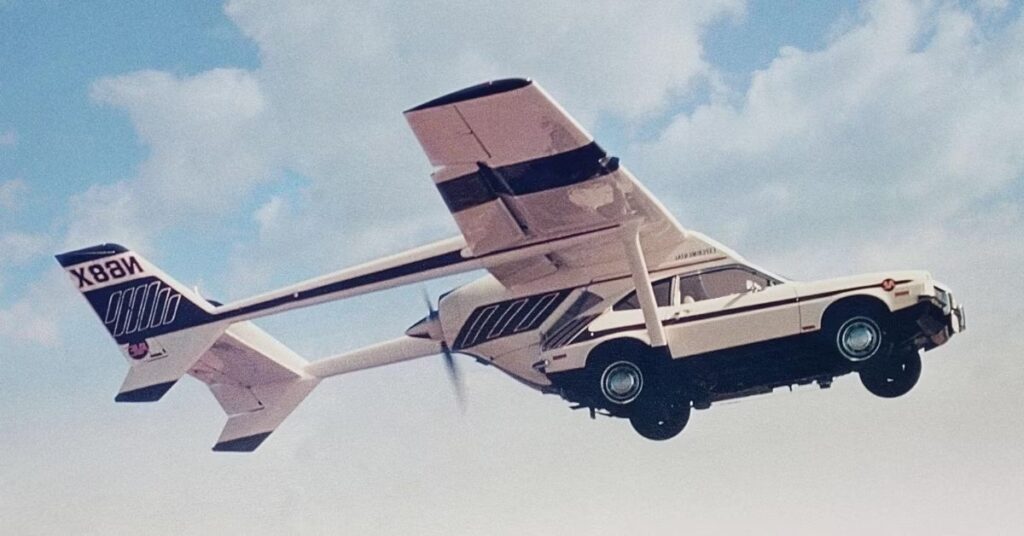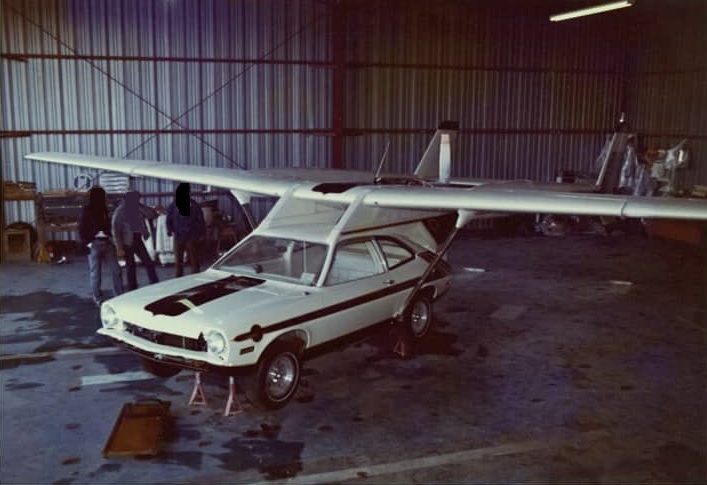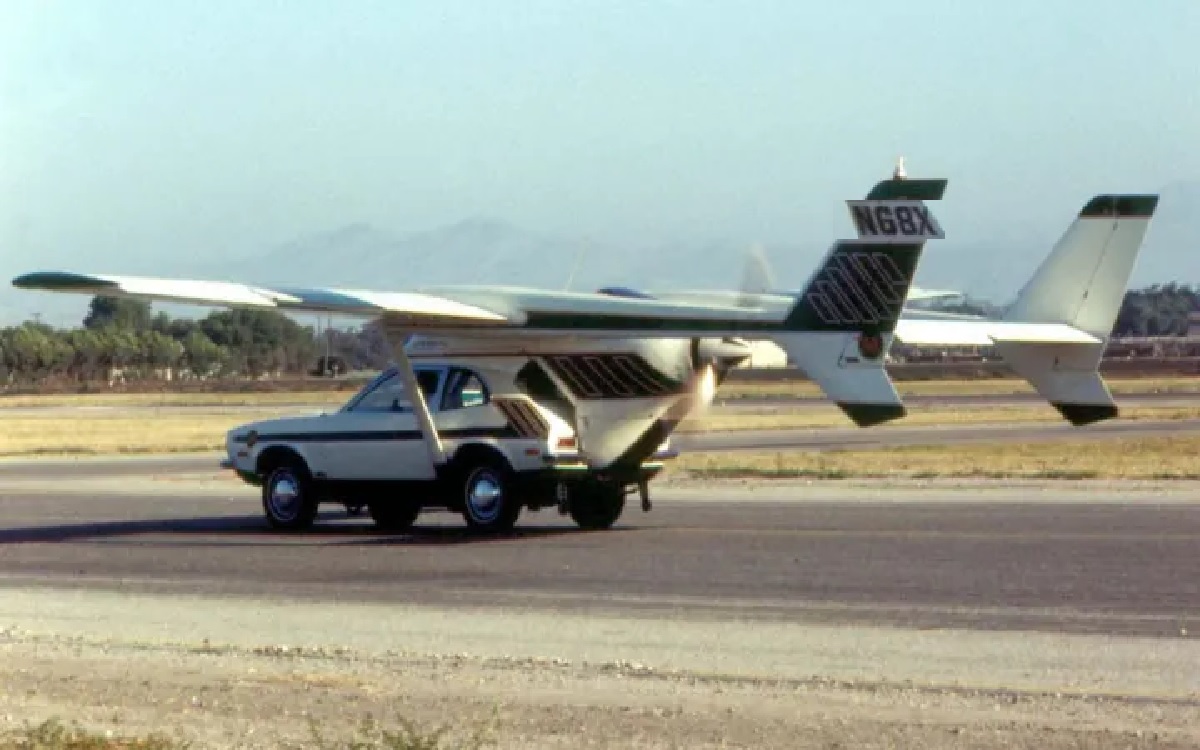Introduction
The Incredible Story of the The Flying AVE Mizar: America’s First Flying Car. In the early 1970s, the dream of a flying car had captured the public imagination for decades. For many, it represented a vision of the future – a world where commuters could simply take to the skies, leaving behind the constraints of traffic and gridlock. While several attempts had been made over the years to turn this dream into reality, none had yet succeeded in creating a truly viable flying car.
Recent Released: Studabaker Car Buy, Repair, and Restore The Classic American Gems Automotive
That was, until the arrival of the The Flying AVE Mizar. Developed by the Advanced Vehicle Engineers (AVE) company, the Mizar was billed as America’s first production-ready flying car. With its unique design that mated a Cessna Skymaster aircraft to a Ford Pinto, the Mizar promised to revolutionize personal transportation.

What followed was a rollercoaster ride of technological breakthroughs, setbacks, and ultimately, tragedy. The story of the The Flying AVE Mizar is one of boundless ambition, dogged persistence, and the considerable challenges of turning science fiction into reality. In this article, we’ll explore the fascinating history of this pioneering flying car, and what its legacy means for the future of personal aviation.
The Birth of the The Flying AVE Mizar
The origins of the The Flying AVE Mizar can be traced back to the late 1960s, when aerospace engineer Henry Smolinski and his business partner, Hal Blake, founded Advanced Vehicle Engineers (AVE). The two men shared a vision of creating a practical, affordable flying car that could revolutionize personal transportation.
Smolinski and Blake’s approach was elegant in its simplicity. Rather than designing a flying car from scratch, they would take an existing aircraft – in this case, the Cessna Skymaster – and mate it to a widely available production car, the Ford Pinto. The idea was that the Skymaster’s rear-mounted engine and twin-boom design would be a perfect fit for the Pinto’s compact body, creating a vehicle that could be driven on the road and flown in the air.
To bring this concept to life, the team at AVE set to work. They carefully modified the Skymaster’s airframe, removing the passenger cabin and front-mounted engine. In their place, they installed the rear section of the aircraft, complete with its powerful 210-horsepower Teledyne Continental engine. This detachable airframe was then mated to the Ford Pinto, creating a unique hybrid vehicle that could transition between road and sky.
Naming their creation the “The Flying AVE Mizar” – after one of the twin stars in the Big Dipper constellation – Smolinski and Blake were confident that they had cracked the code of the flying car. With extensive ground and taxi tests conducted at Van Nuys Airport in California, the stage was set for the Mizar’s first public unveiling.
Promising Beginnings and Tragic Ending
In the early 1970s, the The Flying AVE Mizar began to generate significant buzz. As news of the flying car spread, the public’s imagination was captivated by the prospect of a vehicle that could seamlessly transition from road to air. The Mizar was even featured at the 1972 National Business Aircraft Association (NBAA) convention, further stoking interest in the project.

Buoyed by this enthusiasm, Smolinski and Blake pressed ahead with their plans for the Mizar. In 1973, they secured a distribution deal with Galpin Ford, a prominent car dealership in Sepulveda, California, further adding to the vehicle’s credibility.
However, as the team prepared the Mizar for its first test flights, cracks began to emerge in the project’s foundations. During initial tests at the U.S. Navy’s facilities in Point Mugu, California, the engineers encountered a series of technical challenges, including issues with the vehicle’s weight and structural integrity.
Undeterred, Smolinski and Blake pushed forward, determined to achieve their dream. On August 26, 1973, the Mizar took to the skies for the first time, taking off from Camarillo Airport in California. But disaster struck soon after, as the right wing strut base mounting attachment failed, causing the aircraft to make an emergency landing in a nearby bean field.
Shaken but not deterred, the team continued to work on the Mizar, determined to address the structural issues that had caused the initial failure. Sadly, their efforts were cut short on September 11, 1973, when the Mizar disintegrated in mid-air during a test flight, killing both Smolinski and Blake.
The National Transportation Safety Board’s investigation revealed that the crash was caused by the same wing strut attachment failure that had plagued the earlier test flight. Faulty welds and the inherent challenges of mating an aircraft to a production car body had ultimately proven too much for the Mizar project.
The Legacy of the The Flying AVE Mizar
The tragic end of the The Flying AVE Mizar was a devastating blow, not just for the team at AVE, but for the broader dream of a practical flying car. Smolinski and Blake’s pioneering efforts had come tantalisingly close to realizing this vision, only to be undone by the sheer technical complexity of their creation.
Despite the Mizar’s demise, however, the project’s legacy lived on. In the decades since the crash, the The Flying AVE Mizar has been hailed as a crucial milestone in the long and arduous journey towards a viable flying car. The vehicle’s unique design, ambitious engineering, and the sheer determination of its creators have cemented its place in the annals of aviation history.
Moreover, the lessons learned from the Mizar’s development have helped to shape the ongoing efforts to bring flying cars to market. Modern companies like Terrafugia, Pal-V, and Kitty Hawk have all drawn inspiration from the Mizar’s pioneering work, incorporating similar design principles and addressing the structural challenges that proved the Mizar’s undoing.

As the flying car industry continues to evolve, the The Flying AVE Mizar stands as a testament to the power of human ingenuity and the relentless pursuit of technological progress. While the Mizar’s story may have ended in tragedy, its impact on the field of personal aviation cannot be overstated.
The Technical Specifications of the The Flying AVE Mizar
| Specification | Value |
| Aircraft Model | Cessna Skymaster |
| Engine | Teledyne Continental Motors 210 hp |
| Top Speed | 130 mph |
| Takeoff Distance | 525 ft or less |
| Wingspan | 36 ft |
| Length | 27 ft |
| Height | 9 ft |
| Empty Weight | 2,900 lb |
| Max Takeoff Weight | 3,900 lb |
| Fuel Capacity | 50 gallons |
| Range | 600 miles |
Conclusion
The story of the The Flying AVE Mizar is a testament to the human spirit of innovation and the relentless pursuit of technological progress. Smolinski and Blake’s vision of a practical, affordable flying car was ambitious, bold, and ultimately, tragically cut short.
Yet, the Mizar’s legacy lives on. In the decades since its demise, the lessons learned from this pioneering project have continued to shape the development of flying cars, inspiring a new generation of engineers and entrepreneurs to pick up the mantle and carry the dream forward.
Will The Flying Mizar Car Relaunch In America? With Upgrade Technology. As we look to the future of personal aviation, the The Flying AVE Mizar stands as a shining example of what can be achieved when visionary thinking is combined with tireless dedication and unwavering determination. Though The Flying AVE Mizar story may have ended in heartbreak, its impact on the field of flying cars is undeniable, and its influence will undoubtedly continue to be felt for generations to come.


Leave a Reply